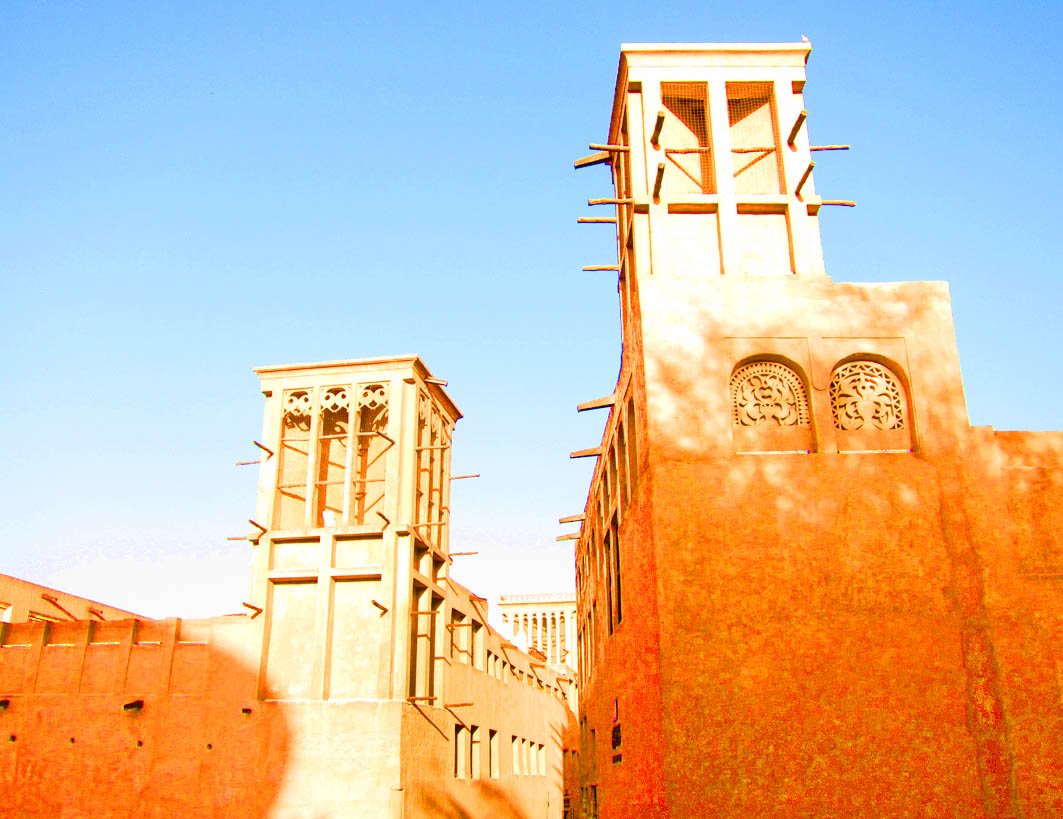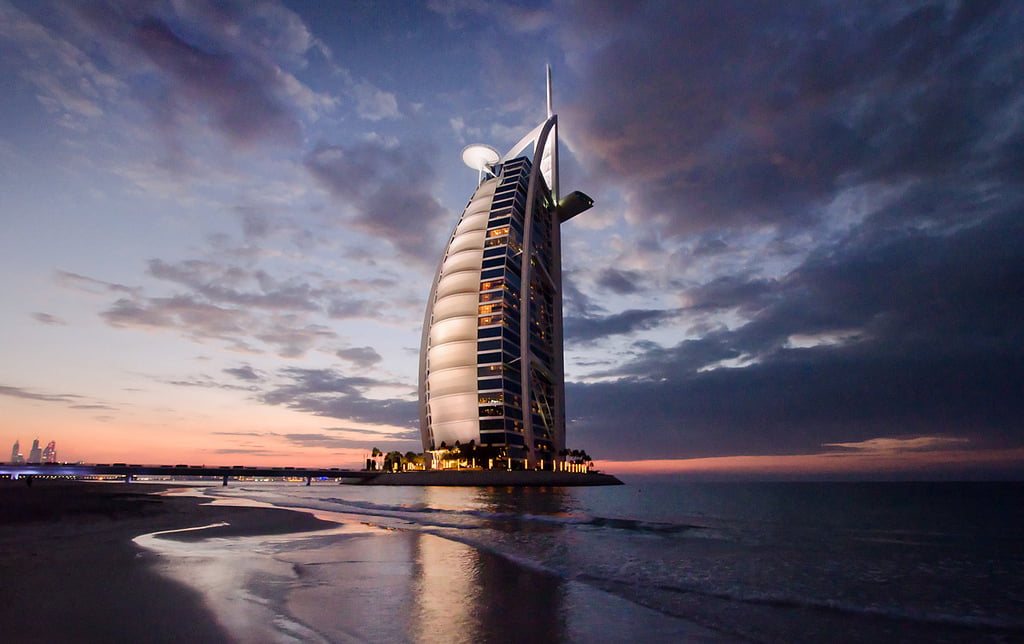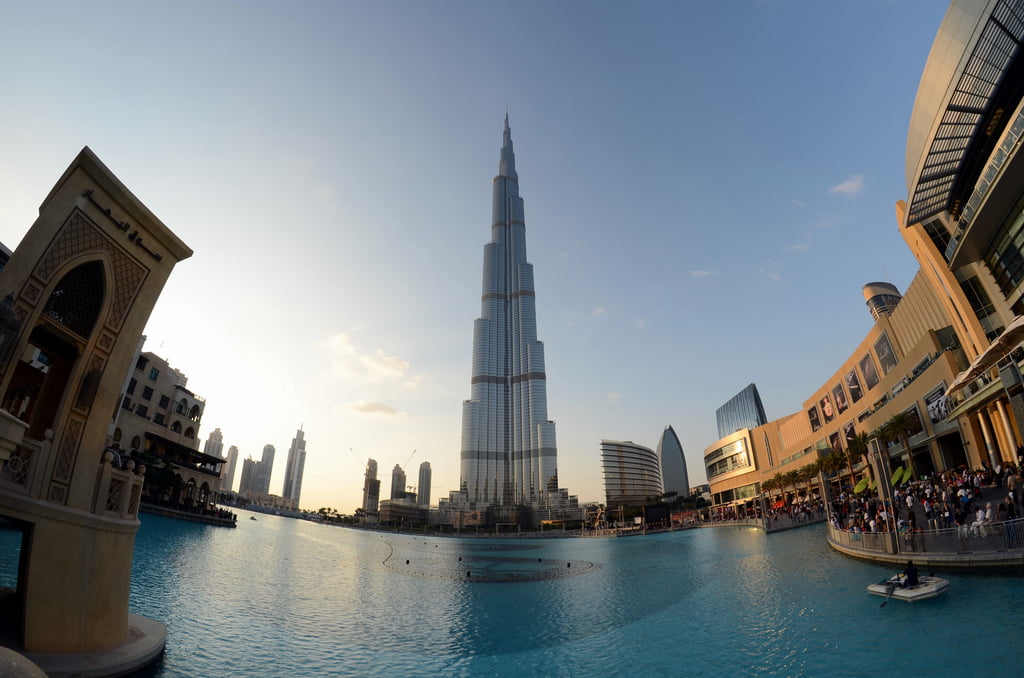A few months ago we decided to start a new blog series where we take a look at different architectural and design trends from around the world. We started off the Bazis world tour by checking out the buildings and architecture in Japan, one of our favourite countries. This time we take a look at one of the most cosmopolitan places in the world: Dubai.
For hundreds of years, Dubai was nothing but desert. This all started to change just over ten years ago when they shifted their economy’s focus away from just oil to highrise construction. From being home to the tallest building in the world (Burj Khalifa) to talks of bringing their own version of the London Eye to the desert, Dubai definitely pulls out all the stops.
Let’s take a look at Dubai’s architectural style, and why we love it:
Cultural Juxtaposition
Historically, Dubai was a transit stop for caravans traveling to and from other Middle Eastern countries, as well as those traveling from East Africa and India. It became a spot where different traditions and cultures mixed, and this is reflected in Dubai’s traditional architecture. It’s clearly Arabic but there are also hints of European and Asian styles.
Back then, Dubai’s original architecture was focused on simplicity, functionality, durability and suitability. But nonetheless, it was still influenced by Iranian, Indian and Islamic designs. You can find a lot of these type of buildings in Al Bastakiya, a historical district in Dubai where wealthy merchants once resided. It’s also home to the Al Fahidi Fort (Dubai Museum), which was built in 1799, and is the city’s oldest surviving structure.
Even to this day, the buildings in Dubai’s architectural scene are a mix between both Eastern and Western architectural styles, perfectly blended to give Dubai its own unique character.
The Sky’s The Limit
One of the things that really stands out about Dubai’s skyline is that they really like pushing the limits of design. The Burj Al Arab for example, is Dubai’s most iconic building and put Dubai on the map. Repeatedly voted as the world’s most luxurious hotel, Burj Al Arab stands on an artificial island and is connected to the mainland via a bridge. Burj Al Arab was designed by WKK Architects and is managed by Canadian Engineer Rick Gregory of WS Atkins.
Burj Khalifa, the tallest building in the world, dominates Dubai’s skyline and can be seen from miles away. It took about 6 years to construct the masterpiece, and the doors officially opened to the public in early 2010. The architects behind the Burj Khalifa hail from Chicago – Skidmore, Owings and Merrill – and they have quite an impressive portfolio to back them up, including the Trump International Hotel and Tower in Chicago and the King Abdul Aziz International Airport’s Hajj Terminal.
We can’t forget Ski Dubai, the indoor snow resort that allows wealthy Arabs and travellers to experience skiing and snowboarding within their own backyard. It’s part of the Mall of Emirates (one of the largest shopping malls in the world!) and opened in 2005. It was developed by Majid Al Futtaim Properties, known for developing shopping malls in the Middle East.
There’s no stopping Dubai and the plethora of architects who build there, Zaha Hadid (Dubai Financial Market), Foster + Partners, Snøhetta (Ras Al Khaimah Gateway) and UNStudio (The Museum of Middle Eastern Modern Art). We are confident that we’ll be seeing plenty of innovative structures from them for years to come – including the much-talked about man-made oasis laden with lagoons and beaches.
We’re already anticipating even more great things from Dubai, let’s see how it all plays out!





